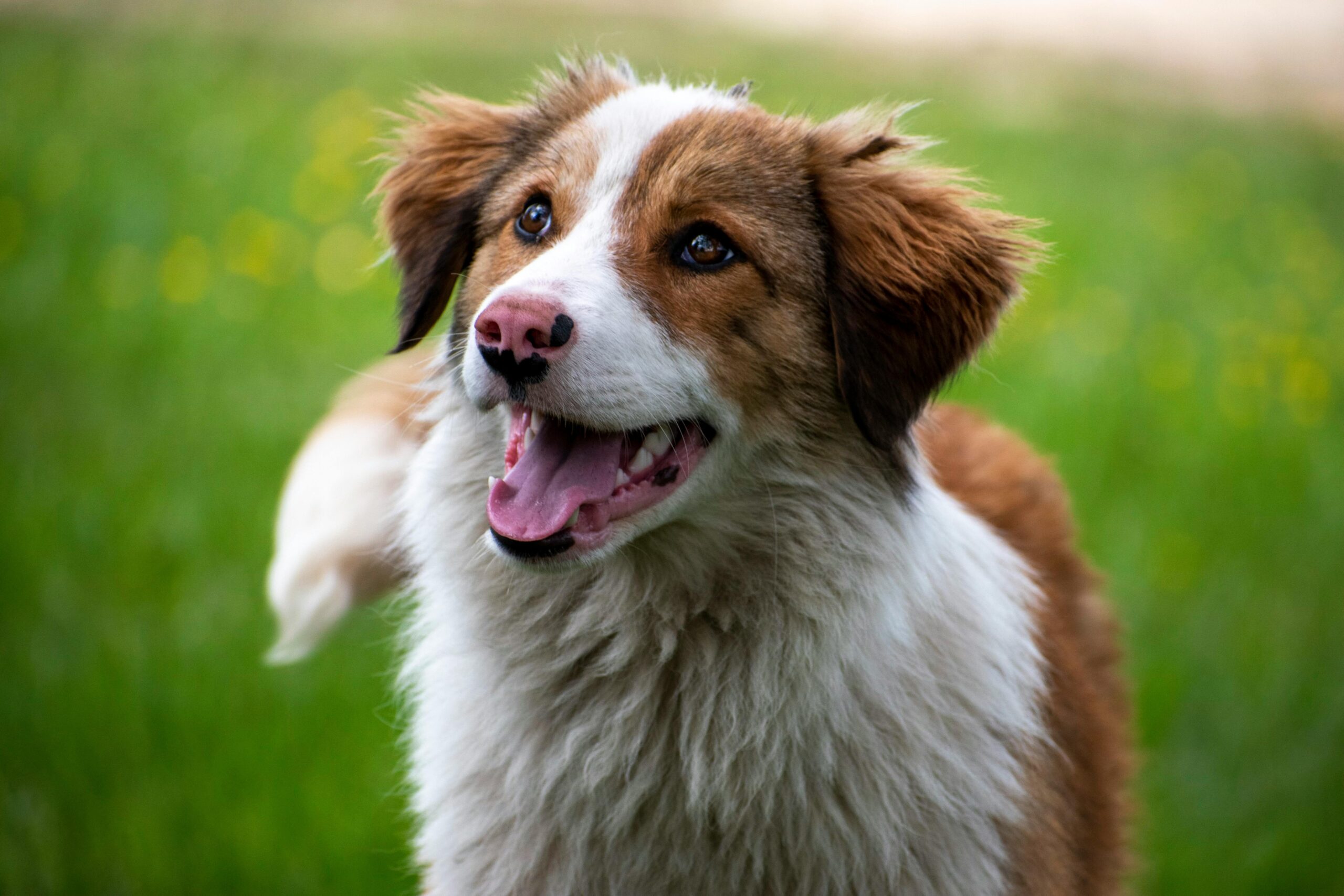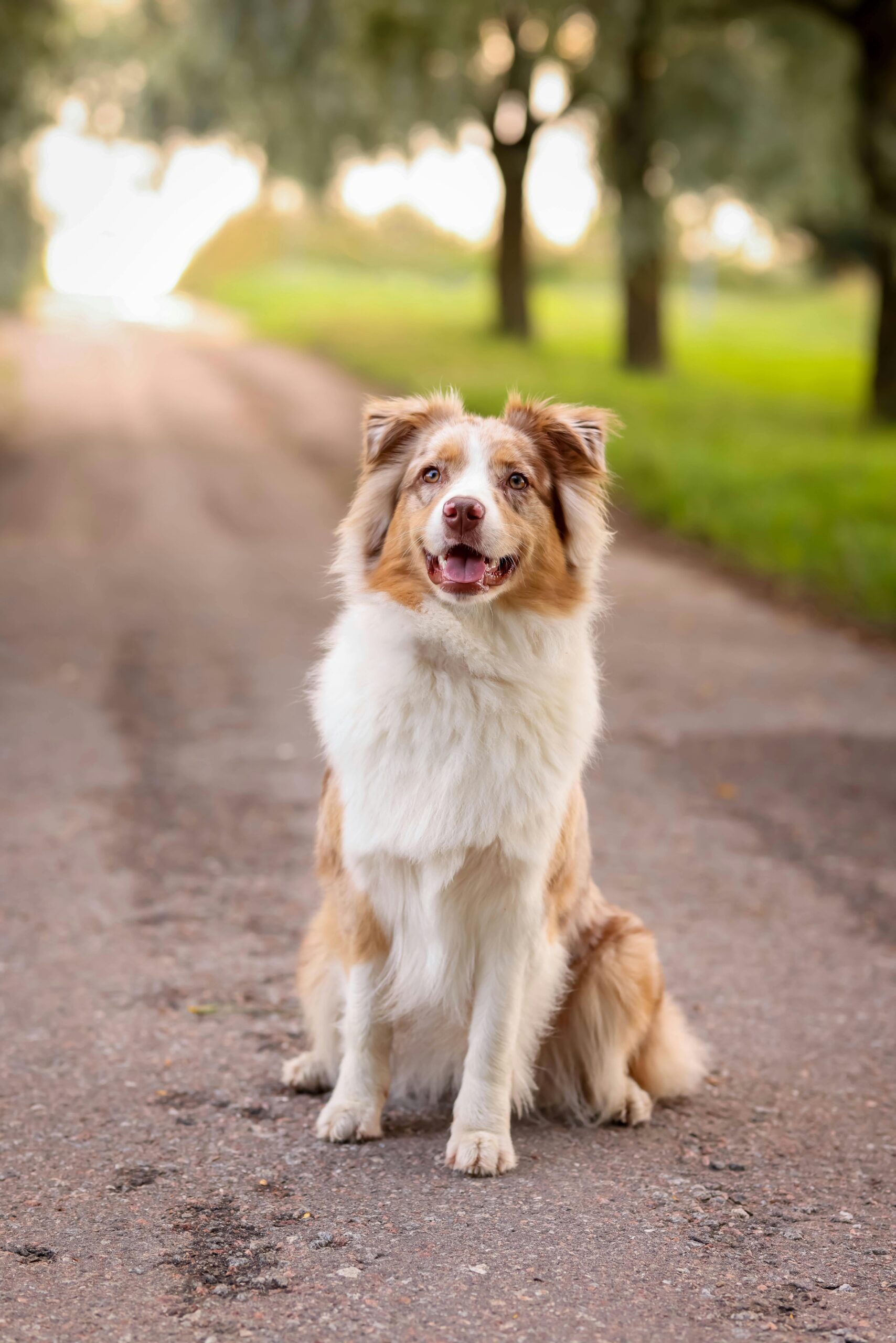The Australian Shepherd, often referred to simply as the “Aussie,” is a breed that has captured the hearts of dog enthusiasts worldwide. Known for its intelligence, energy, and striking appearance, the Australian Shepherd is a versatile and loyal companion, excelling in various roles from herding to agility competitions. This article delves into the origins, characteristics, training needs, health considerations, and the overall lifestyle that suits this dynamic breed.

Origins and History
Despite its name, the Australian Shepherd is not originally from Australia. The breed’s development took place in the United States during the 19th century. Basque shepherds, who had emigrated to Australia and later moved to the U.S., are believed to have brought with them dogs that played a significant role in the Australian Shepherd’s lineage. These dogs were then crossbred with other working dogs in America, such as Collies and Border Collies, to create a breed suited for herding livestock in the diverse and often rugged terrain of the American West.
The Australian Shepherd was particularly popular among ranchers and cowboys in the western United States, especially in states like California, where the breed’s agility, intelligence, and endurance were highly valued for herding sheep and cattle. Over time, the breed’s versatility led to its use in various roles beyond herding, including search and rescue, therapy, and even as service dogs.
Physical Characteristics
The Australian Shepherd is a medium-sized breed with a well-balanced, muscular build. Males typically stand between 20 to 23 inches at the shoulder, while females are slightly smaller, ranging from 18 to 21 inches. Their weight varies between 40 to 65 pounds, depending on their build and sex.
One of the most striking features of the Australian Shepherd is its coat, which is medium-length and can be either straight or slightly wavy. The coat comes in a variety of colors, including blue merle, red merle, black, and red, with or without white markings and tan points. The merle pattern is particularly distinctive, often giving the breed a marbled or speckled appearance that adds to its allure.
The Aussie’s eyes are another captivating feature. They can be brown, blue, amber, or any combination of these colors, sometimes even having two different colored eyes, a condition known as heterochromia. This unique eye coloration, combined with their attentive and expressive gaze, contributes to the breed’s striking appearance.
Personality and Temperament

Australian Shepherds are renowned for their intelligence and work ethic. They are highly trainable and eager to please, making them excellent companions for active individuals or families. Aussies are often described as being “velcro dogs” due to their strong desire to be close to their owners. This loyalty, combined with their protective instincts, makes them natural guardians of their home and family.
However, this breed’s high intelligence and energy levels also mean that they require a significant amount of mental and physical stimulation. Without adequate exercise and mental challenges, an Australian Shepherd can become bored and may develop behavioral issues such as excessive barking, digging, or even destructive chewing.
Socialization is key to raising a well-rounded Australian Shepherd. While they are generally friendly and good-natured, Aussies can be reserved or wary of strangers if not properly socialized from a young age. Early exposure to a variety of people, places, and situations will help them develop into confident and well-adjusted adults.
Training and Exercise Needs
Training an Australian Shepherd is both a rewarding and essential part of ownership. Due to their intelligence and strong work drive, Aussies excel in obedience training and are quick learners. They thrive in environments where they have a job to do, whether it’s herding, agility, obedience competitions, or even learning new tricks at home.
Positive reinforcement is the most effective training method for this breed. Aussies respond well to praise, treats, and play as rewards for good behavior. Consistency and patience are key, as they may try to outsmart their owners if they sense any inconsistency in the rules.
When it comes to exercise, Australian Shepherds require a substantial amount of physical activity to keep them happy and healthy. A daily routine that includes at least one to two hours of exercise is ideal. This can include long walks, runs, playtime in a secure yard, or participating in dog sports like agility, flyball, or frisbee.

Mental stimulation is just as important as physical exercise for this breed. Puzzle toys, interactive games, and training sessions that challenge their minds will help prevent boredom and keep them engaged. Herding activities, even if not with livestock, can be simulated with herding balls or by participating in herding trials.
Health Considerations
Australian Shepherds are generally healthy dogs, but like all breeds, they can be prone to certain health conditions. Responsible breeders screen their breeding dogs for common health issues to reduce the risk of passing on genetic problems to their offspring. Some of the health concerns that can affect Australian Shepherds include:
- Hip Dysplasia: A condition where the hip joint doesn’t fit together perfectly, which can lead to arthritis and pain. Regular exercise and maintaining a healthy weight can help reduce the risk of hip dysplasia.
- Elbow Dysplasia: Similar to hip dysplasia, this condition affects the elbow joint and can cause lameness or arthritis.
- Collie Eye Anomaly (CEA): A genetic eye condition that can affect the development of the retina and potentially lead to blindness. Regular eye exams can help detect CEA early.
- Progressive Retinal Atrophy (PRA): Another genetic eye disease that causes the gradual deterioration of the retina, eventually leading to blindness.
- Epilepsy: A neurological disorder that can cause seizures. While epilepsy can be managed with medication, it is a lifelong condition.
- MDR1 Gene Mutation: This genetic mutation makes Australian Shepherds more sensitive to certain medications, particularly those used to treat parasites. It’s important to have your Aussie tested for this mutation to avoid potential drug reactions.
- Autoimmune Disorders: Aussies can be prone to autoimmune conditions, where the immune system mistakenly attacks the body’s own cells. These can manifest in various ways, including skin issues, thyroid problems, and more.
Regular veterinary care, a balanced diet, and an active lifestyle are crucial for keeping an Australian Shepherd in good health. Owners should also be mindful of the breed’s predisposition to certain genetic conditions and work with their vet to ensure their dog receives the appropriate screenings and preventive care.
Living with an Australian Shepherd

Australian Shepherds are best suited for active households where they can participate in daily activities. They thrive in homes with large, securely fenced yards where they can run and play. However, they can also adapt to apartment living if their exercise needs are met through regular outings and activities.
Due to their herding instincts, Aussies may try to herd children, other pets, or even adults by nipping at heels. While this behavior is natural for the breed, it should be redirected through training to prevent it from becoming problematic. Early training and socialization can help curb this instinct and teach the dog appropriate behavior around people and other animals.
Australian Shepherds are generally good with children and can be protective of them. However, interactions between dogs and young children should always be supervised to ensure the safety of both. Teaching children how to interact with dogs respectfully is also important in fostering a positive relationship.
This breed’s loyalty and affection make them excellent family pets, but they are not the best choice for families who are away from home for long periods. Aussies are social dogs that thrive on companionship and can suffer from separation anxiety if left alone for too long. Providing them with plenty of mental and physical stimulation, along with opportunities for social interaction, is essential for their well-being.
Australian Shepherd in Sports and Activities
The Australian Shepherd’s intelligence, agility, and work ethic make them stars in various canine sports and activities. Their natural herding abilities are still utilized in ranch work, but they also excel in a range of competitive events:
- Agility: Australian Shepherds are known for their speed and precision, making them top competitors in agility trials. These events involve navigating an obstacle course of jumps, tunnels, weave poles, and other challenges, all under the guidance of their handler.
- Obedience: Aussies excel in obedience competitions, where they perform a series of tasks on command, demonstrating their training and discipline.
- Herding Trials: Many Australian Shepherds still participate in herding trials, where they showcase their ability to move livestock under control. Even if they don’t work on a farm, these trials provide an excellent outlet for their herding instincts.
- Flyball: This fast-paced relay race involves teams of dogs racing down a track, jumping hurdles, and retrieving a ball from a spring-loaded box. Aussies’ speed and enthusiasm make them natural competitors in this sport.
- Disc Dog (Frisbee): Aussies’ agility and love for play make them excellent disc dogs. They enjoy catching and retrieving flying discs, often performing acrobatic leaps in the process.
Participating in these activities not only provides physical exercise but also strengthens the bond between the dog and owner. It’s a great way to keep an Australian Shepherd mentally stimulated and fulfilled.
Grooming and Maintenance
Australian Shepherds have a double coat that requires regular grooming to keep it healthy and looking its best. Their coat sheds year-round, with heavier shedding occurring in the spring and fall when they blow their coats.
Brushing your Aussie at least two to three times a week will help remove loose fur, prevent matting, and distribute natural oils throughout the coat. During shedding season, more frequent brushing may be necessary to manage the increased shedding.
Bathing should be done as needed, typically every few months, or when the dog becomes dirty. It’s important not to over-bathe, as this can strip the coat of its natural oils.






